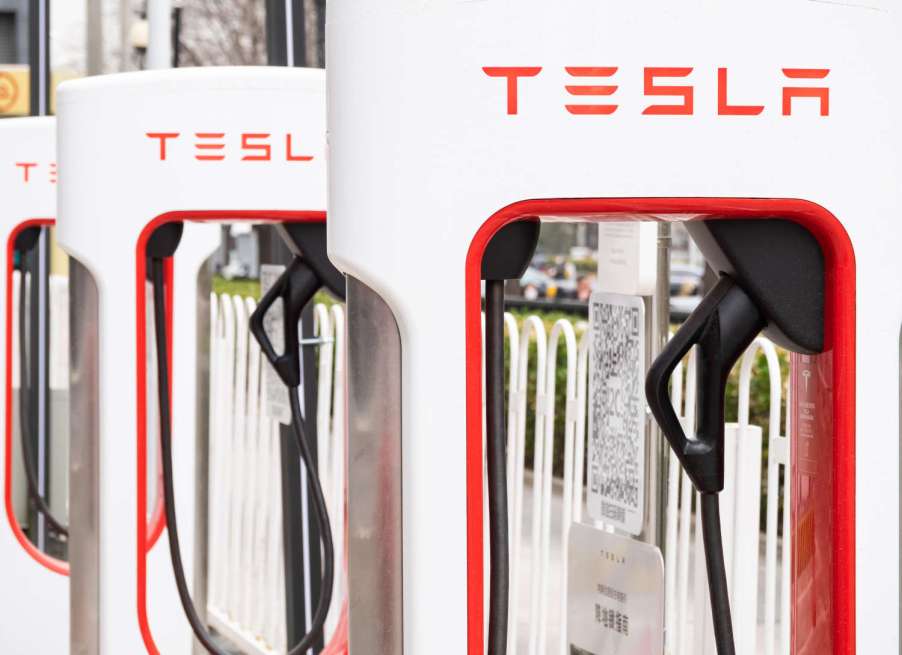
What Was the First Electric Car Built in the U.S.?
Electric vehicles are becoming more commonplace. Depending on where you live, you probably cannot go a day without seeing quite a few EVs on the road. Now that EVs are so common, do you ever wonder when they were invented? Let’s take a look at some history of historic cars and see where EVs fit in, specifically in the United States.

It is hard to pinpoint when EVs first appeared
It is hard to pinpoint a moment in history when the electric car first appeared. We can’t identify a specific inventor or location where it all started. But, we can point to a series of breakthroughs in the 1800s that made the path from battery to electric motor possible.
In the 1830s in Scotland, the innovator Robert Anderson delivered what is believed to be the first electric motorized vehicle. It is believed that Anderson built his motorized carriage sometime between 1832 and 1839, according to Car And Driver. The batteries used to power Anderson’s carriage were not rechargeable. This made his electric vehicle more of a parlor trick than a practical form of transportation.
The emphasis on the future of motorized vehicles saw an increase at the turn of the 20th century. Consumers were able to choose if they wanted a steam, gasoline, or electric engine in their vehicles. Steam and gasoline engines, while great innovations in their own right, brought problems, such as reliability and pollution, that many urban consumers did not appreciate. The electric engine became more competitive.
The 1970s brought gasoline shortages and rising prices, and the return of the electric car back to the forefront of research. The electric motor was not popular yet among consumers, but scientists worked tirelessly to develop alternative methods of transportation. It was in 1997 that the first mass-produced hybrid, the Prius, hit the market.
The lithium-ion battery has since grown in capacity and reliability and most automakers are now jumping on the EV bandwagon. Some manufacturers are even vowing to cease making internal combustion engines altogether.
The first EV built in the United States came from Iowa
In Des Moines, Iowa, in 1890, the electric car first appeared in the United States, according to Car And Driver. Scottish-born chemist, William Morrison, applied for a patent on his electric carriage that he may have built as early as 1887.
Morrison’s EV came with front-wheel drive, four horsepower, and a reported top speed of 20 miles per hour. It had 24 battery cells that needed to be charged every 50 miles. Morrison’s innovation came from a traditional horse-drawn Surrey carriage that was converted to fit a battery and could carry a maximum of 12 people. It was all the rage at the Chicago World’s Fair of 1893. Morrison sparked a fire for electric-powered motors.
There was a slow-down for EVs in the early 1900s
At the turn of the 20th century, the horse was still the primary form of transportation. As the United States grew in prosperity, so did the innovation in motorized vehicles. These engines came in steam, gasoline, or electric versions.
Steam was a reliable source of energy. It had been powering factories and trains since early the 19th century. It wasn’t until the 1870s that steam was used in cars due to its long startup times and need to be refilled. This caused some urban drivers to favor electric vehicles thanks to their easier and quieter driving.
However, alongside the electric vehicle was the gasoline-powered car. Gasoline-powered cars came with their issues as well, such as the difficult manual shift and the hand-crank start.
Many urban drivers favored the electric car until Henry Ford came on the scene with his more-efficient assembly line production. It was Ford’s Model T that changed the automobile world. It was widely available and affordable. The Model T, in 1912, was $650 and the electric roadster was $1,750.
By the 1920s, gas became much cheaper and the United States developed a better system of roads. Americans wanted to explore their country and chose gas-powered cars to get it done. Electric cars disappeared from the roads by 1935.


